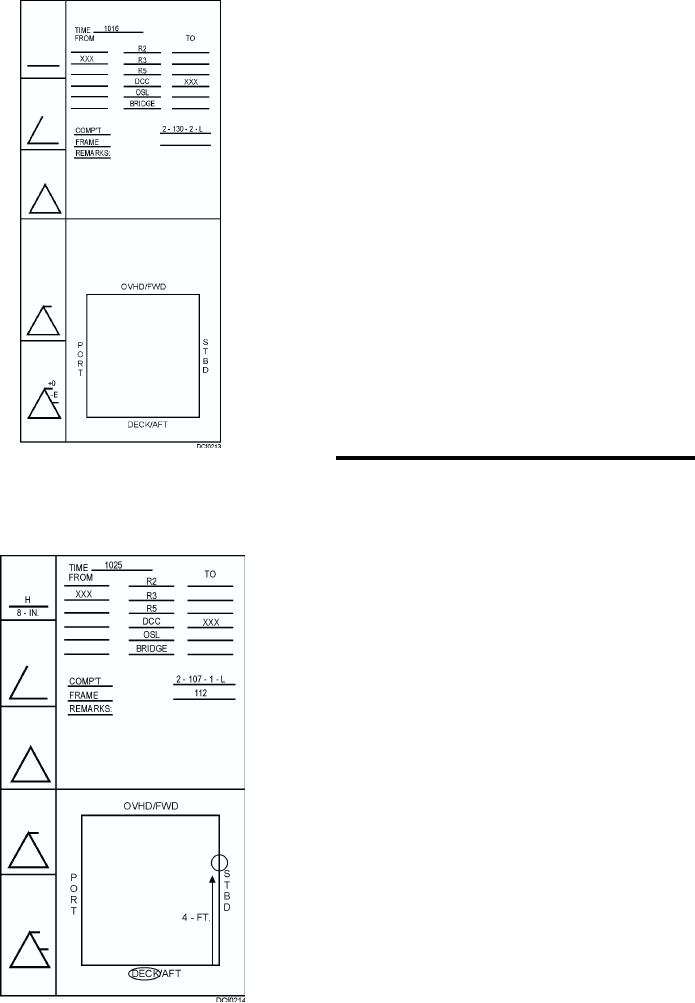
REVIEW QUESTIONS
Q7.
Each repair party will be able to assume the
duties of DCC if DCC becomes a battle
casualty by monitoring ALL casualty reports.
1.
True
2.
False
Q8.
Battle telephone systems include primary,
auxiliary, telemetric, kinetic, and
miscellaneous.
1.
True
2.
False
Q9.
Message blanks are the standardized method
of written communication used to relay
damage control information.
1.
True
2.
False
Figure 2-13. Sample message of the eighth report.
DIAGRAMS AND BLUEPRINTS
Learning Objective: Recall the purpose and use of
damage control diagrams and blueprints.
As a Damage Controlman you will often use
various shipboard diagrams and blueprints. The
ship's plans (blueprints) and isometric damage
control diagrams are the drawings that you will use
most. To better understand the ship's plans and
blueprints, you should complete the NRTC Blueprint
Reading and Sketching, NAVEDTRA 12014.
In addition to knowing how to read drawings, you
must also know how to locate applicable drawings.
The onboard drawings, which are sometimes referred
to as ship's plans or ship's blueprints, are listed in the
Ship's Drawing Index (SDI). The SDI is kept in the
engineering department office (log room).
The SDI lists all working drawings that have a
NAV S H I P S o r NAV S E A d r aw i n g n u m b e r, a l l
manufacturer's drawings, all equipment drawing
lists, and all assembly drawings that list detail
drawings. Drawings that are actually kept onboard are
identified in the SDI by an asterisk (*). Drawings are
Figure 2-14. Sample message to report the size and location of
listed in numerical order in the SDI.
a hole.
2-19

